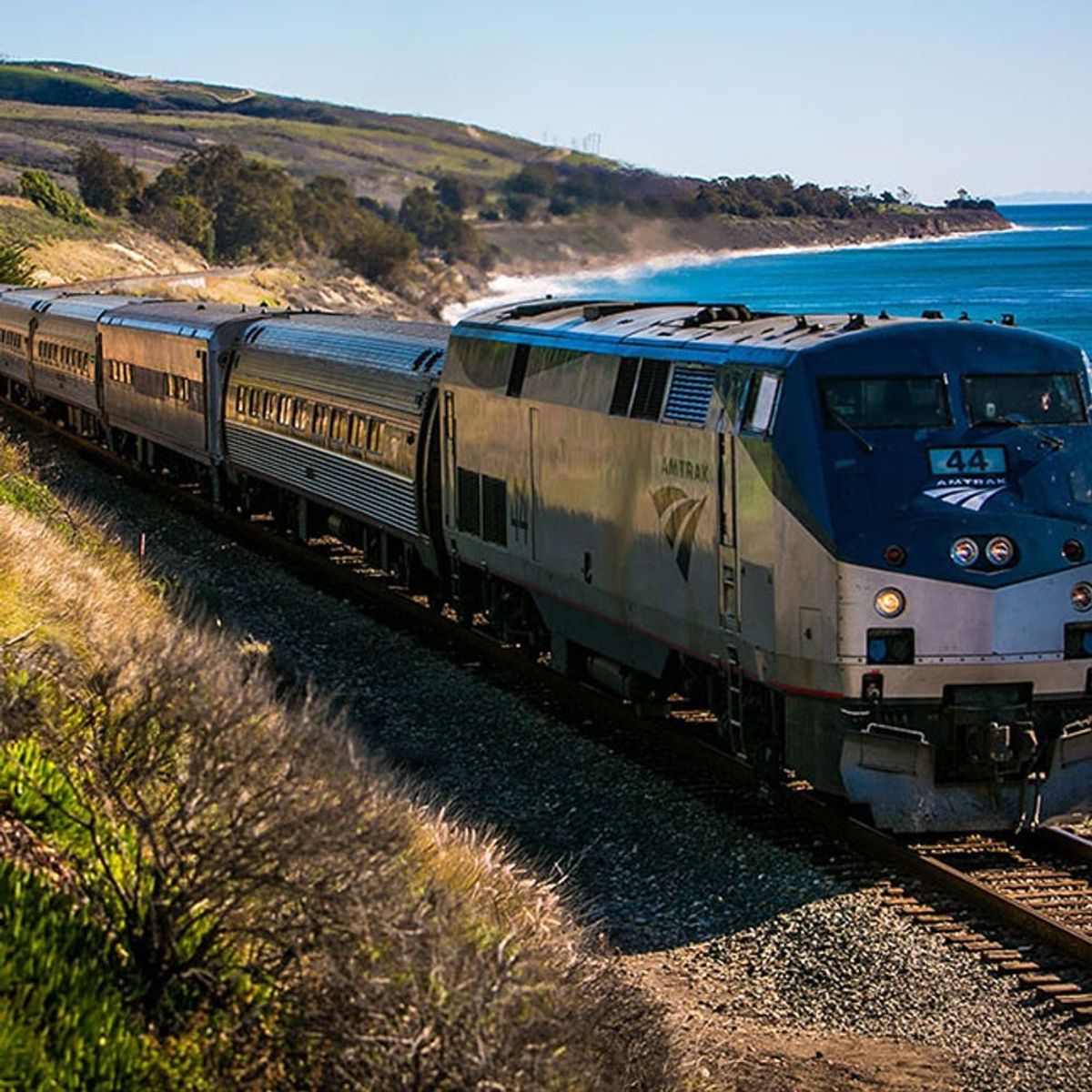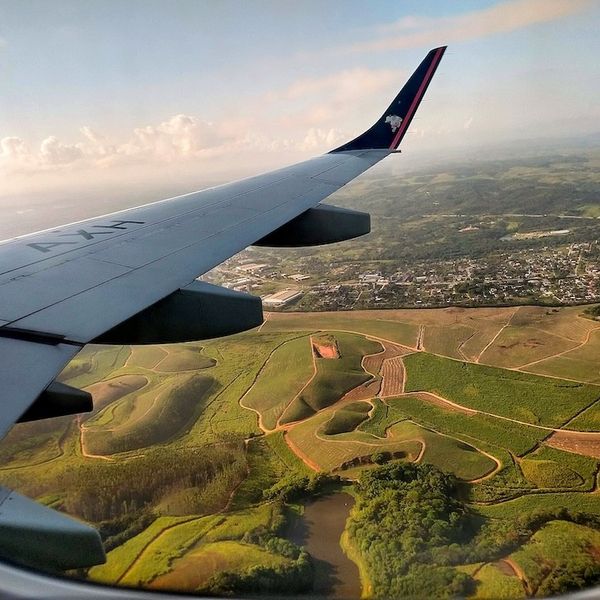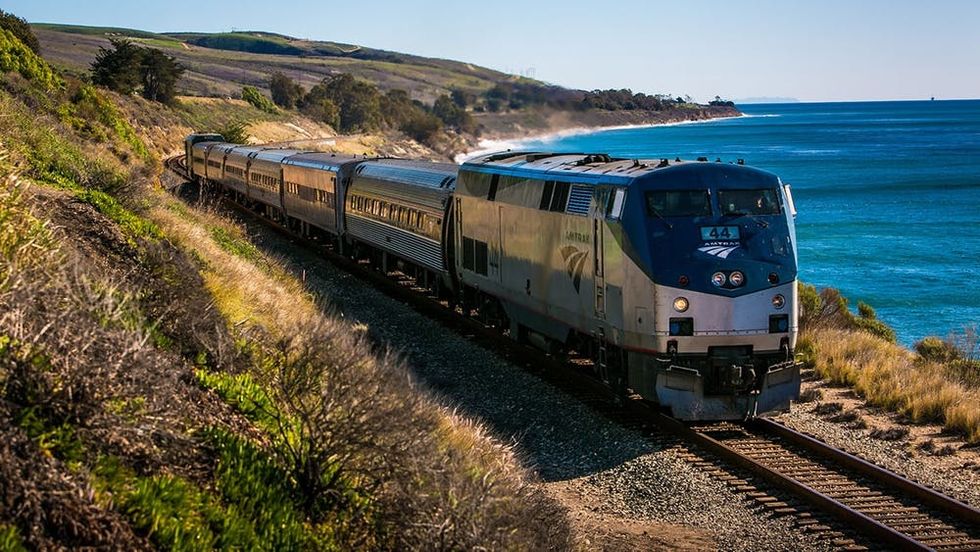Many of Amtrak’s iconic journies face termination under Trump’s proposed budget plan.
All Those Epic American Train Routes on Your Bucket List Might Soon Shut Down

When Seattle-based travel photographer Nitish Kumar Meena boarded Amtrak’s Coast Starlight he had high expectations. Meena is from India where most people travel as an integral part of the culture. “I carry a distinct perception of a train journey,” he writes in a blog post. “Crowded coaches, aunties making conversation, families playing card games, the smell of home cooked food, the noise of crying babies, and the freedom of opening the doors of the running train to feel the wind.”
If any other train trip can compete with that sort of experience, Amtrak’s Coast Starlight probably has the best shot. Stretching 1,377 miles from Los Angeles to Seattle, the journey takes you through some of the West Coast’s most scenic landscapes. Winding in between mountain ranges, next to oceans, and into the forest, the window is essentially a moving postcard of all the natural beauty the West has to offer. Meena recalls his first trip fondly, writing, “[The] journey on West Coast was like daydreaming. The minute I entered the observation car, I was met with floor-to-ceiling windows, grand views of Pacific Ocean, dolphins jumping out the water, and snowy peaks of the Olympic National Park. It was a relaxed, yet exciting, way to experience nature.”
These idyllic and quintessentially American scenes are precisely why so many Americans and foreigners alike have a long-distance train journey high up on their bucket list. It will take at least four to five times longer than air travel, but this kind of transit is more about the journey than the destination. However, if eager travelers want to be able to check an iconic train ride off that travel list anytime in the near future, they’d better get their tickets ASAP. What’s the rush? Cuts in President Trump’s proposed budget plan will result in the elimination of all Amtrak long-distance trains.
That means the popular journey from California to Colorado on the California Zephyr will no longer be in operation. Neither will the Coast Starlight that Meena recalls so fondly. The Cresent train, which travels from New York all the way down to New Orleans, would be cut, As would 12 other lines all across the country.
Trump’s budget proposes $2.4 billion in cuts from the transportation department, a 13 percent decrease from the year before. More specifically, it flat-out calls for the cancellation of all federal funds directed toward Amtrak’s long-distance journeys, which the budget states “have long been inefficient and incur the vast majority of Amtrak’s operating losses.”
In a statement emailed to us about Trump’s budget, Amtrak’s CEO Charles Moorman writes, “[The] budget proposal to eliminate funding for Amtrak’s long-distance service could impact many of the 500 communities we serve. Amtrak operates 15 long-distance trains across the nation and these routes offer the only Amtrak service in 23 of the 46 states we serve […] As the budget process progresses, we look forward to working with President Trump, Secretary Chao, and Congress to ensure they understand the value of Amtrak’s long-distance trains and what these proposed cuts would mean to this important part of the nation’s transportation system.”
But why does Amtrak even need government money? Shouldn’t ticket fares cover all operating costs? Ideally, yes, but realistically, no. No country in the world operates a passenger rail system without some form of public support for capital costs and operating expenses. Last year, 94 percent of Amtrak’s operating costs were covered by ticket sales, funds from state partners, and other revenue (a two percent increase from the year before), but the federal government still spent $1.4 billion on Amtrak.
To be fair to Trump’s plan, the reason for nixing the funding isn’t totally bogus. In 2016, Amtrak still reported a $227 million loss, overall. However, it also saw record-breaking numbers in other important areas of the business. It reported $2.14 billion in ticket sales, an all-time high for the company and a $12 million increase from the year prior. They also serviced 31.3 million customers, nearly 400,000 more than the previous year. More than four million of those passengers were onboard a long-distance train. In fact, long-distance ridership went up by 3.7 percent last year.
These promising numbers shouldn’t come as a major surprise. The nostalgic form of travel has seen a trendy resurgence over the past few years among a younger generation. In 2014, Amtrak launched its Artist Residency program, which sponsors a handful of writers annually to work on projects while riding long-distance trains. Earlier this year Riverdale’s Cole Sprouse produced a photo essay for Condé Nast Traveler that documented his journey from California to New York on board the Southwest Chief. The slow travel that accompanies a train journey allows for some pretty amazing photography opportunities — something that’s not lost on an Instagram-obsessed generation.
Two years ago, 27-year-old Allie DeMartino and her partner embarked on Amtrak’s 15-day US Cross Country package. They started in their home base of New York and stopped in iconic US cities like Minneapolis, Glacier Park, Portland, Salem, Los Angeles, and Flagstaff. DeMarino describes the experience as “once in a lifetime.” She tells us about the scenic observation car (pictured below) which allows for a floor-to-ceiling view of the scenery passing by. But her fellow passengers are what made the trip most memorable. “We met some kids on their way to a mission, an old remarried couple who told us stories about their lives over dinner, watched a group of people in an intense game of Magic, and sat next to some guy with the word ‘hell’ tattooed on his face four times,” She recalls.
When asked to weigh in on the potential shutdown, DeMartino says, “I would be very disappointed if that happens… the best part of the experience is getting to sit on this train for hours on end with no expectations and basically watch America like a movie. Our trip itself was the train ride. You can’t really replace it.”
These trains have become a charming way for Americans to explore more of their own country, but it also attracts international visitors. While in the states on a study abroad program, UK citizen Bradley Wherry took a month-long trip all the way from New York to California, stopping in cities like New Orleans and Chicago in between. He tells us, “The main reason we used it [Amtrak], was that as a tourist and student we actually had days to burn, but not money. Amtrak was perfect as it allowed us to travel, see places, meet people while also providing accommodation on the way.”
Like DeMartino, the characters on the train played a memorable role in Wherry’s experience. He says, “We met an interesting character who was New Orleans born and bred and he told us some interesting stories of the culture of his city. How they party and BBQ their way through storms, this is how they deal with the devastation that can be potentially caused, living life to its max in the here and now.”
Wherry says it would be a shame to see the long-distance trains shut down. “The railroad is a large part of the limited history of the US, it is something that should be nourished and maintained. To restrict people to only the options of driving and flying is a restriction to letting all people travel and experience the world.”
Aside from the pure legacy of these trains, Amtrak is also a major job creator in often rural areas of America — an issue that coincidentally served as the core foundation for Trump’s presidential campaign. The company has over 20,000 employees in total. At a minimum, the proposed cuts would result in 220 towns and cities losing all Amtrak service, a loss that would undoubtedly result in layoffs for a significant amount of Amtrak workers predominantly residing in middle America.
This isn’t a factor lost on the National Association of Rail Passengers. “It’s ironic that President Trump’s first budget proposal undermines the very communities whose economic hardship and sense of isolation from the rest of the country helped propel him into office,” NARP President Jim Mathews writes in a statement.
He continues, “These working class communities — many of them located in the Midwest and the South — were tired of being treated like ‘flyover country.’ But by proposing the elimination of Amtrak’s long-distance trains, the Trump Administration does them one worse, cutting a vital service that connects these small town economies to the rest of the US. These hard working, small town Americans don’t have airports or Uber to turn to; they depend on these trains.”
What are your thoughts on the potential shutdown of Amtrak’s long-distance trains? An American legacy or a waste of federal money? Share with us on Twitter @BritandCo.














